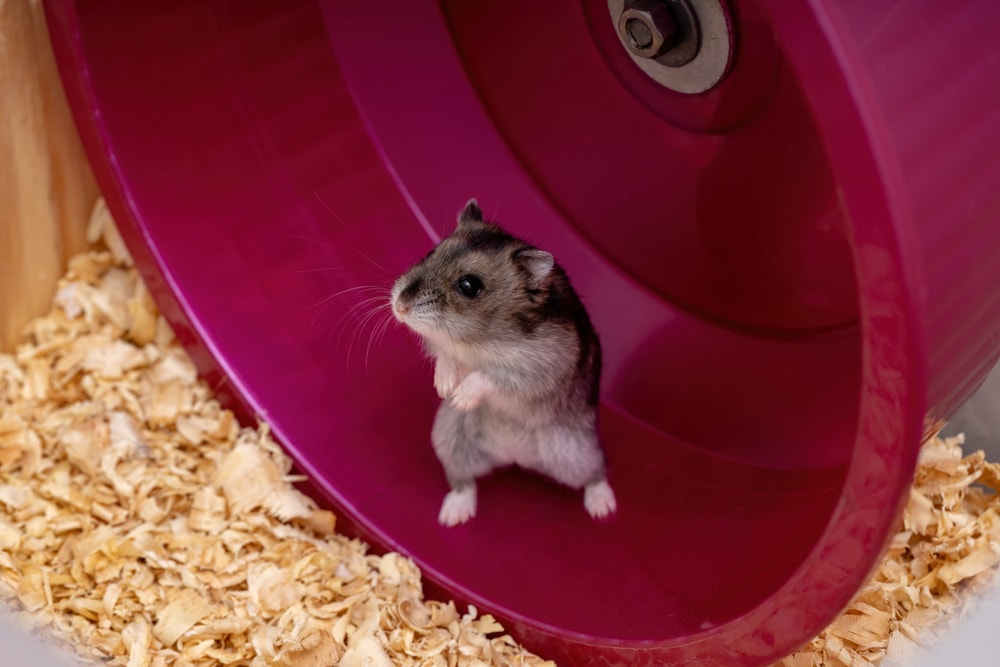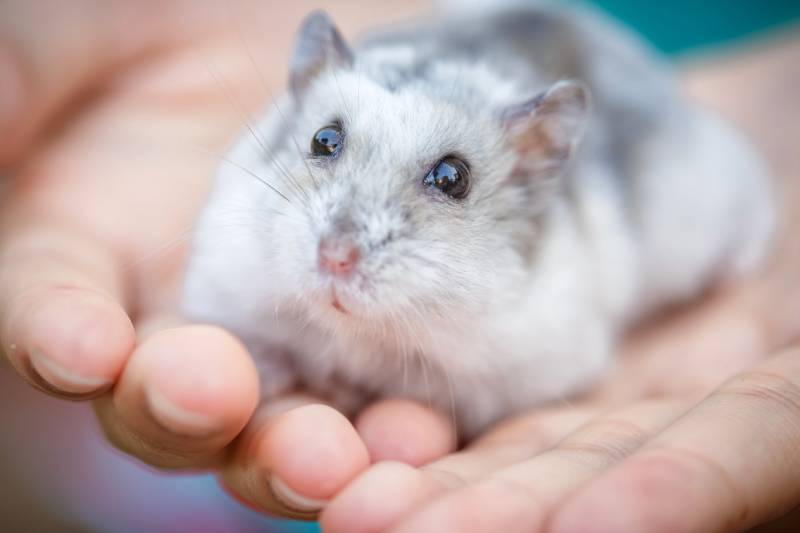6 Types of Homemade Hamster Bedding (With Pros & Cons)

Updated on
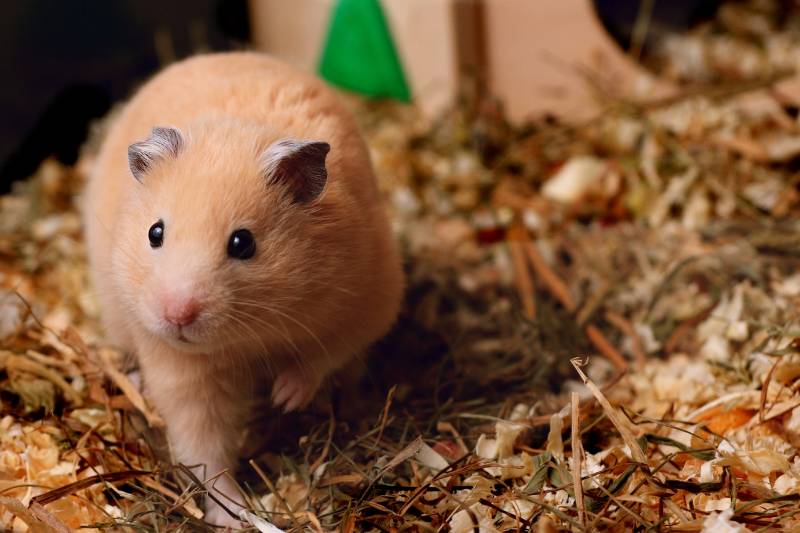
Hamster bedding lines the bottom of your pet’s cage. It provides a soft surface, offers burrowing opportunities, and even acts to catch and contain pee and poop. Getting the right bedding is important. There are commercial bedding options available, including sawdust and shredded paper products. But, whether you are trying to save a few bucks, or you can’t always get easy access to the bedding you buy, there are homemade alternatives that you can use.
Below, we have listed six homemade hamster bedding options, most of which use readily available materials that you should be able to lay your hands on.

The 6 Types of Homemade Hamster Bedding
1. Shredded Paper

Shredded paper hamster bedding offers a step up from newspaper, but you need to take care when choosing the paper. It should be unbleached and unused. And the softer the paper, the better. Napkins, kitchen rolls, and toilet paper make reasonable options.
The paper will soak up urine well, and your hamster can dig around in shredded paper, but it isn’t that comfortable and if you’re buying paper for this purpose, it can work out quite expensive.
- Most people have kitchen rolls and toilet paper spare
- Soaks up urine well
- Unbleached, unused paper shouldn’t cause irritation
- Can be expensive if you don’t have a constant paper supply
2. Newspaper

As a one-off, last resort, newspaper can be used as a temporary solution. If you need bedding and can’t get to the shop until the next day, newspaper is viable. However, the ink can run and may irritate your hammie’s skin. It also gets sodden with urine and it doesn’t offer any burrowing or digging opportunities.
It is readily available, though, as most of us have some lying around the house, even in the form of free leaflets and newspapers that come through the door. If you do need to use newspaper, put down a few layers and replace it as soon as possible.
- Inexpensive
- Readily available
- Can cause skin irritation
- Can’t be used for burrowing or digging
- Gets sodden when wet
- Only an emergency, short-term solution
3. Hay
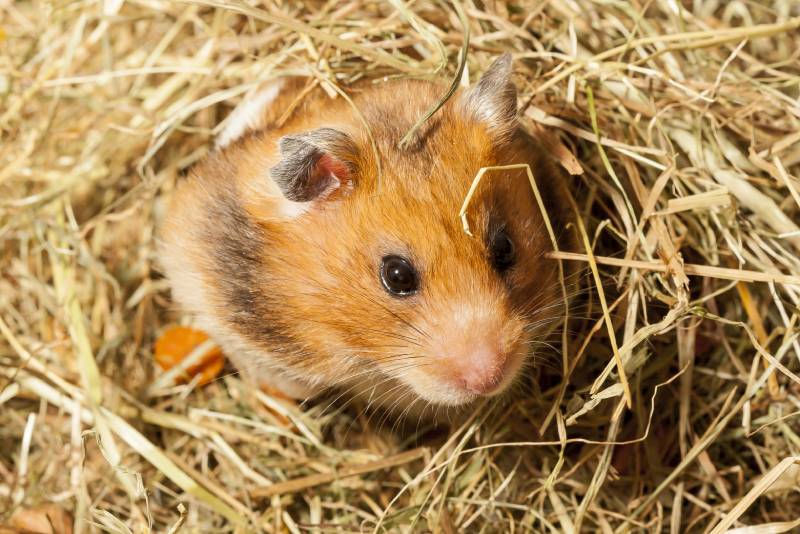
If you have any old hay that has gone too stale to feed your hammie, you can still use it. Pull the hay apart a little so it isn’t a solid block and use it to line the base of the cage. Certain hay, like Timothy hay, is soft so it is comfortable. And, if your hamster chooses to nibble on its bedding, it is perfectly safe. However, hay can be dusty which can cause or exacerbate respiratory problems.
It can also attract mites and become moldy. Not all types of hay are suitable, either, so you will need to check before using.
- Good way to use up old and unused hammie hay
- Comfortable and warm bedding
- Can be dusty
- Can attract mold and mites
4. Shredded Cardboard

Shredded cardboard is a good option for those who receive a lot of parcels. Remove any sections that have tape, adhesive, or ink on them, and then shred the rest of the cardboard. Ideally, you will need to shred it by hand to prevent sharp edges and protect your hamster. And it can be difficult to hand shred the paper down to a reasonable size.
Although cardboard does soak up urine, it takes longer than tissue paper and it won’t do much to hold poop.
- Great way to use up cardboard
- Can be free
- Takes quite a lot of work to hand-shred cardboard
- Not great for collecting poop
5. Fabric Scraps

Fabric scraps are reusable because they can be washed, and they are especially beneficial bedding during the cold winter months when they will keep your hamster warm and snug. Use fleece or scraps from knitted clothes. Make sure the scraps are cut so that they are too large to fit in your hamster’s mouth and make enough to cover a few inches at the bottom of the cage.
If you make extra, you can replace half while you clean it. To clean the bedding, remove solids, put the bedding in a laundry bag, and place it in hot water. Dry it out and keep it until you next do a partial clean.
- Fleece makes warm bedding for cold winters
- Can be cleaned and reused
- Cleaning means extra work
6. Paper Pulp
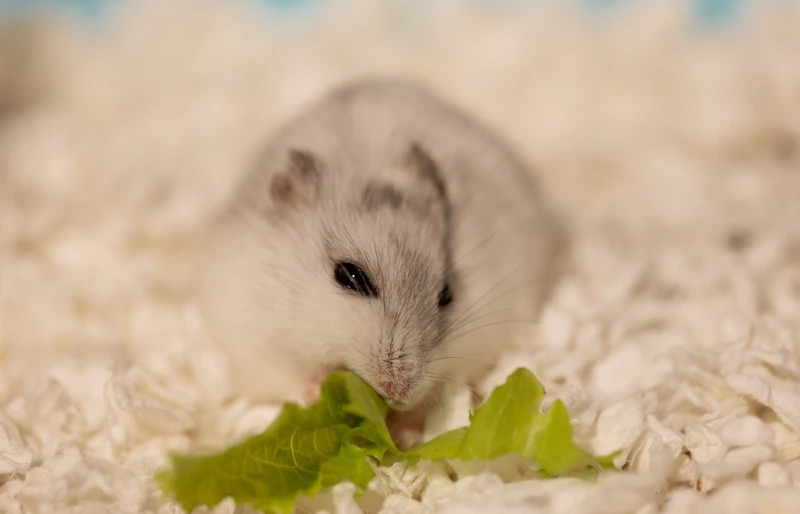
Pulping paper removes ink and any other unwanted impurities, thanks to its screening process. Making it is a somewhat labor-intensive process, but if you have a lot of paper that you would otherwise discard and don’t want to pay for commercial paper pulp bedding, it is a good alternative.
- Rip computer paper into small pieces.
- Add to hot water and stir the mixture to remove ink.
- Squeeze all of the paper into a large ball and drain to get rid of excess water.
- Put the paper back in the bucket and repeat the process several times to ensure all the ink is gone.
- Once the ink has gone, create balls roughly the size of tennis balls and soak them for a few hours.
- Break them down into smaller balls.
- Allow the balls to air dry.
- Pulping removes ink and prevents irritation
- Good use of unwanted, used paper
- Labor intensive process

Frequently Asked Questions
Do Hamsters Need Sand?
Hamsters benefit from being able to have regular sand baths. It helps keep them clean and it mimics their wild habit of rolling in sand to get rid of mites and other nasties. Provide a sand bath: even if your hamster never uses it, its presence won’t harm them.
Do Hamsters Need Bedding?
Hamsters use bedding for several purposes. First, it provides a soft layer on top of the hard cage floor. It also encourages burrowing or digging, which is a natural behavior for hamsters. Finally, it also helps soak up urine and gather poop so that it is kept away from your hamster’s body. Every hamster cage should include bedding, and it should be regularly replaced or cleaned.
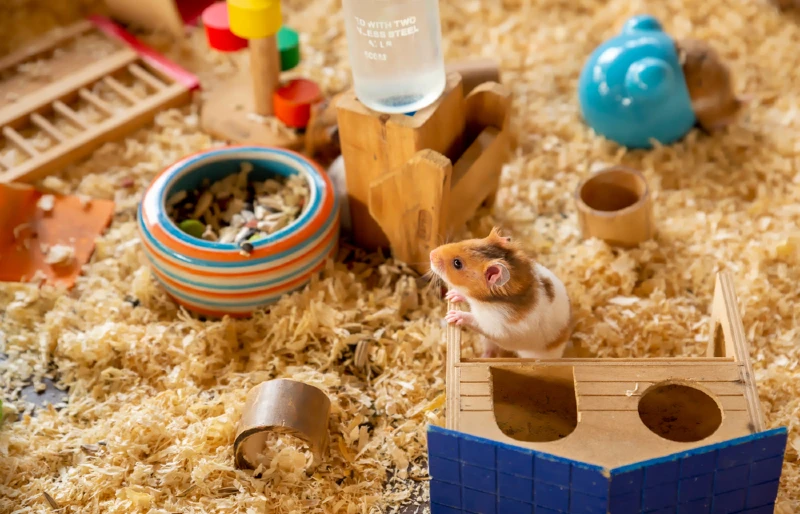
How Deep Should Hamster Bedding Be?
The depth of bedding will depend, partially, on the size of the hamster cage. An ideal cage will be 2 feet tall. A cage of this size will need at least 6 inches, and up to 8 inches, of bedding on the bottom of the cage.
Can I Use Soil As Hamster Bedding?
Any soil you use needs to be unfertilized, untreated, and completely free of any chemicals or other additives. It should also be dried. In most cases, it is too much of a risk to use soil so it is best avoided as a bedding material.

Conclusion
Hamsters are fairly inexpensive and low-maintenance pets. But, while they don’t take as much care as some other pet types, they do have certain requirements that must be met. One of those requirements is the provision of a safe and clean bedding material. Hamster bedding serves multiple purposes that benefit your hamster and it also makes your life easier by soaking up urine and collecting poop.
There are commercial bedding options available, but if you’ve run out or are looking for an alternative option, the homemade hamster bedding options above can prove useful.
- See also: Can Hamsters Get Fleas?
Featured Image Credit: Stanislaw Sulica, Shutterstock

